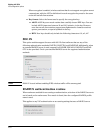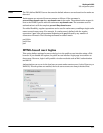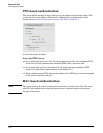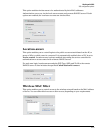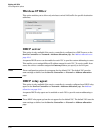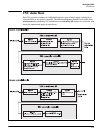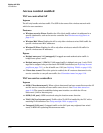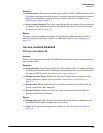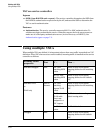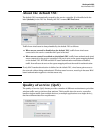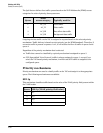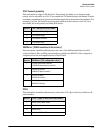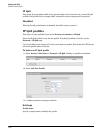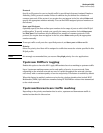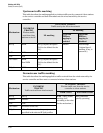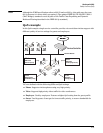
Working with VSCs
Using multiple VSCs
VSC on service controller
Ingress
SSID (from RADIUS auth request): The service controller determines the SSID from
the RADIUS authentication request sent by the AP, and uses this SSID to determine the
VSC to use for authentication.
Features
Authentication: The service controller supports 802.1X or MAC authentication. To
validate user login credentials the service controller can use the local user accounts or
make use of a third-party authentication server (Active Directory or RADIUS). See
Authentication types on page 7-3.
Using multiple VSCs
When multiple VSCs are defined, it is important to know how user traffic is matched to a VSC
definition. When VSCs have access control enabled, incoming traffic is handled on the service
controller as follows:
Incoming traffic
properties
Port If ... Then ...
SSID and untagged LAN VSC with
matching SSID
exists
Traffic is sent on the egress
mapping defined on the matching
VSC.
No VSC with
matching SSID
exists
Traffic is sent on the egress
mapping defined on the default
VSC.
SSID and VLAN
or
VLAN only
LAN or
Internet
VSC with
matching
Ingress VLAN
exists.
Traffic is sent on the egress
mapping defined on the matching
VSC.
VLAN exists in
VLAN table
(but is not
assigned to a
VSC ingress.
Traffic is routed according to the
global routing table.
No VLAN
exists.
Traffic is blocked.
Untagged LAN Traffic is sent on the egress
mapping defined on the default
VSC.
2-24



